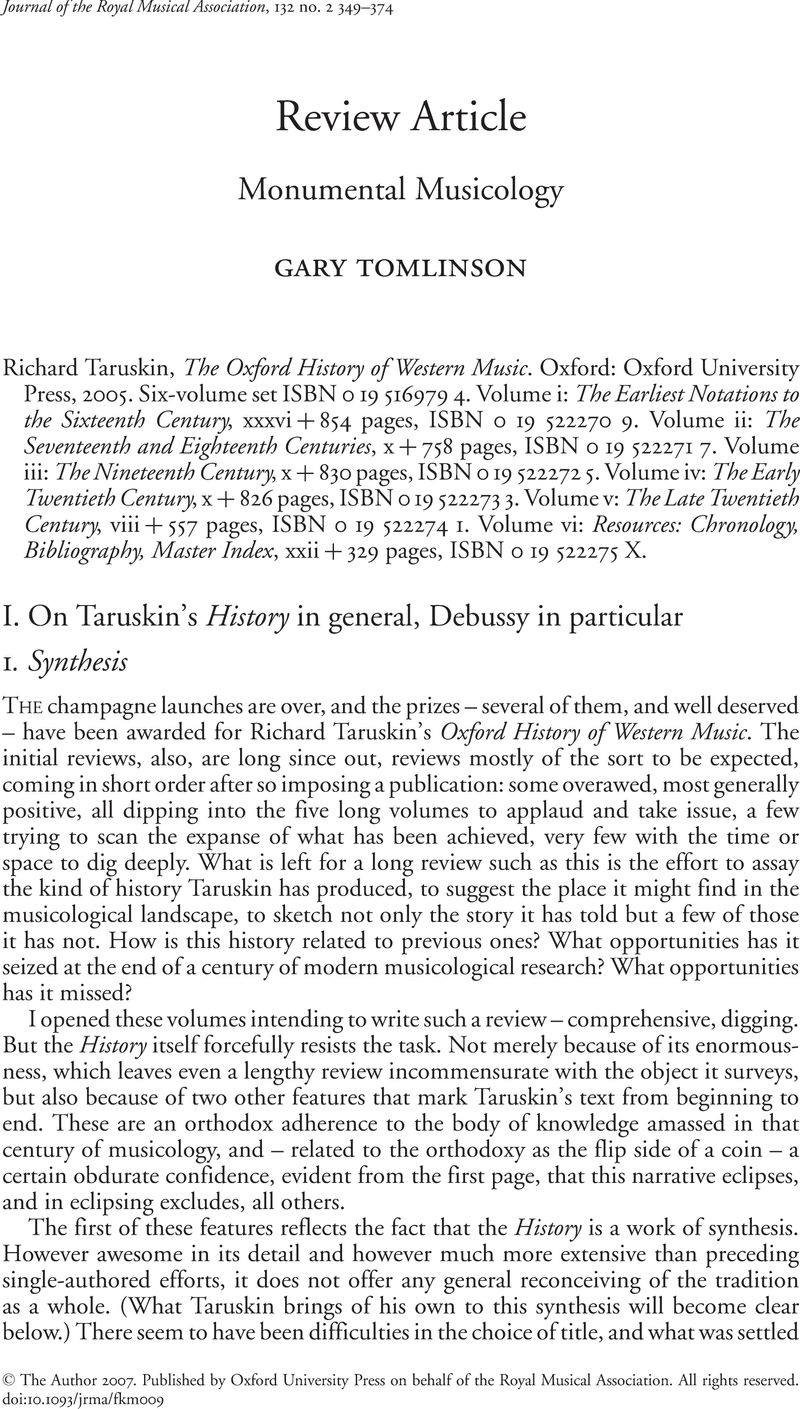Published online by Cambridge University Press: 01 January 2020

1 This is especially true of the early volumes of the History. A quick census of the endnotes reveals a steady increase in their number as Taruskin makes his way through his chronology. We start with very sparse citations in Volume i, on average one note for every 3.8 pages of text. The frequency of notes increases steadily through the following volumes until, in Volume v, we average well over a note per page. The same uneven care in tracking sources is evident in the Further Reading section of Volume vi, the closest thing the History offers to a bibliography. 14 pages of secondary sources suffice for the millennium from Carolingian times to Bach, with several chapters each earning four sources or fewer. In contrast, 39 more pages are needed for the period from 1750 to the present, with the listings for many chapters, especially in the twentieth-century volumes, approaching or exceeding a page in length. Adding to the feeling that the History does not acknowledge its debts as generously as it should is the fact that the endnotes are thickest precisely where Taruskin's own researches have most often led him, in the late nineteenth and the twentieth centuries. In areas where his own expertise is thinnest, the citations are fewest. We might have expected the reverse. Such under-citation is a standard (and accepted) procedure in general historical textbooks – the sort of thing written for use in American undergraduate survey courses, even those for music majors. But it is hardly appropriate for a multi-volume work as detailed as the Oxford History. Perhaps the inadequacy of citation is a reflection of the genesis of the work. It was not at the outset projected to attain its extraordinary bulk, and its expansion in the course of writing from the original smaller work to its present size may simply have outstripped the citation style fitted to the original dimensions. The book, in other words, may have metamorphosed as it was written from one species (textbook) to another (full-scale history). If so, its citation style needed its own metamorphosis.Google Scholar